
Prosegue la collaborazione fra il Liceo Linguistico “Cattaneo-Dall’Aglio” e Redacon.
"Speakeasy", una rubrica curata dagli studenti.
----
Bts - map of the soul: persona theories
Hello everybody!
Today’s theme is BTS and their latest album: “Map Of The Soul: Persona”
First of all: who is bts?
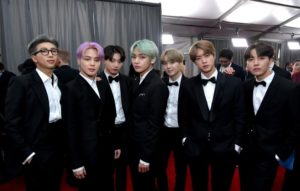
A peculiarity that makes this band unique in the world is that each of their albums (the release of one is called “comeback”) is based on a specific and deep topic, often taken from the books of well-known authors: they like to develop ideas based on the work of some great thinkers, like their Wings album, which is based on Hermann Hesse’s book “Demian”, which is about a boy's relationship with good and evil in the world.
A month ago, BTS released their single “Boy With Luv” featuring the American singer Halsey from their latest album ”Map Of The Soul: Persona”. The following day, on April 13, it was confirmed that their song became the most-viewed online video with 74.6 million views in just 24 hours.
Why am I telling you about them? Simple: because this album may refer to “Jung’s Map Of The Soul” by Murray Stein.
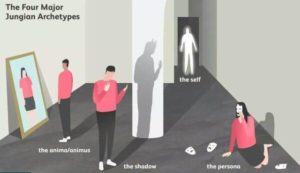
- Persona;
- Shadow;
- Anima/Animus;
- Self.
An archetype is a primitive mental image innate from our earliest human ancestors and it’s supposed to be present in the collective unconscious.

Persona is then the result of social adaptation that plays an important role in dealing with other people. If the Persona is excessive, then our authentic personality fades until it becomes practically unrecognizable.
Bts have included masks in much of their recent work, including their “Fake Love” and “Singularity” videos and in the 2018 Mama intro video. The band has also previously discussed the importance of authenticity in their work, including how vital it’s not to confuse their identities as performers with their identities as people.

Then there are fans who believe that Map of the Soul, and specifically Jung's theories, are tied to the Love Yourself series:
Love Yourself: Her (the 1st album of the series) represents “Anima” (the femininity present in men), as the videos that were released along with the album included different women (perhaps the members' female alter-egos).
Love Yourself: Tear represents the “Shadow” archetype, as it deals with dark, repressed feelings and desires.
Love Yourself: Answer would be “Self”, as it describes self-acceptance and awareness.
More broadly, fans are theorizing about Map of the Soul's place within BTS's discography as a whole. There's a hidden track on the band's debut album, 2 Cool 4 Skool, called “Path”. In the song, the members talk about the roads that have led them to become singers and their fears that they're choosing the wrong careers. BTS's last few album titles spell out the word "path," which could represent that they now believe this is the definitive path for them to follow.
In the album there are some songs that have a hidden and deep meaning:
- “Mikrokosmos”: it means “small world” and it describes the relationship between the one and the other, so it’s connected to the concept of individuality and community by This relationship refers to man as representative of the universe, which the human summarizes in himself. Our psyche is in harmony with the structure of the universe: what happens in the macrocosm (“Makrokosmos”) happens equally in our soul.
“Dionysus”: he was the God of wine, summer and theater. He was a male, but with a feminine nature (Anima), as he was raised as a girl to hide his true identity from Hera. So he’s also the God of people who feel confused about genders, because he himself can relate to this uncertainty about sexual identity. This dual personality is linked to Jung’s concept of Persona and the masks.
- “Jamais vu”: it comes from the psychological phenomenon for when you have experienced something many times, but you’re completely unfamiliar with the feeling. It’s the reverse version of “déjà vu”, which is when you feel as if you had already done something, but you never have, and you’re completely familiar with it.
In a recent interview, the boys said that the entire album is dedicated to their greatest love: their fans, who always support them from all over the world.

Giorgia Bertolani, Classe 3aQ Liceo Linguistico Dall’Aglio
Traduzione.
Bts-Mappa dell’anima: teorie sulla persona
Ciao a tutti!
Il tema di oggi sono i Bts e il loro ultimo album: "Map Of The Soul: Persona"
Prima di tutto: chi sono i Bts?

Una peculiarità che rende questa band unica al mondo è che ognuno dei loro album (la cui uscita è chiamata "comeback") si basa su un argomento specifico e profondo, spesso tratto dai libri di autori noti: amano sviluppare idee basate sul lavoro di alcuni grandi pensatori, come il loro album Wings, basato sul libro di Hermann Hesse "Demian", che parla della relazione di un ragazzo con il bene e il male nel mondo.
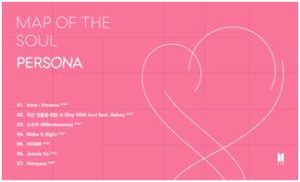
Perché vi sto parlando di loro? Semplice: perché questo album potrebbe riferirsi a "Jung's Map Of The Soul" di Murray Stein.
L'antropologo e psicologo svizzero Carl Gustav Jung (1875-1961) fu il fondatore della psicologia analitica e credeva che esistessero quattro principali archetipi della mente umana che formano la personalità nel suo insieme:
- Persona;
- Ombra;
- Anima/Animus
- Sé.
Un archetipo è un'immagine mentale primitiva innata proveniente dai nostri primi antenati umani e dovrebbe essere presente nell'inconscio collettivo.

La Persona è quindi il risultato dell'adattamento sociale che svolge un ruolo importante nelle relazioni con le altre persone. Se la Persona è eccessiva, la nostra personalità autentica svanisce fino a renderla praticamente irriconoscibile.
I Bts hanno incluso le maschere in gran parte del loro lavoro recente, inclusi i loro video "Fake Love" e "Singularity" e nel video introduttivo ai Mama del 2018. La band ha anche discusso in precedenza dell'importanza dell'autenticità nel loro lavoro, incluso quanto sia vitale non confondere le loro identità di artisti con le loro identità come persone.

Poi ci sono fan che credono che Map of the Soul, e in particolare le teorie di Jung, siano legate alla serie di Love Yourself:
Love Yourself: Her (il primo album della serie) rappresenta "Anima" (la femminilità presente negli uomini), in quanto i video che sono usciti insieme all'album includevano diverse donne (forse gli alter-ego femminili dei membri).
Love Yourself: Tear rappresenta l'archetipo di "Ombra", poiché tratta di sentimenti e desideri oscuri e repressi.
Love Yourself: Answer sarebbe "Sé", in quanto descrive auto-accettazione e consapevolezza.
Più in generale, i fan stanno teorizzando sul ruolo di Map of the Soul all'interno della discografia dei Bts nel suo complesso. C'è una traccia nascosta nell'album di debutto della band, 2 Cool 4 Skool, chiamata "Path". Nella canzone, i membri parlano delle strade che li hanno portati a diventare cantanti e delle loro paure di scegliere le carriere sbagliate. Gli ultimi titoli degli album dei Bts formano la parola "percorso" (path), il che potrebbe rappresentare il fatto che ora credono che questo sia il percorso definitivo da seguire.
Nell'album ci sono alcune canzoni che hanno un significato nascosto e profondo:
- "Mikrokosmos": significa "piccolo mondo" e descrive la relazione tra l'uno e l'altro, quindi è collegato al concetto di individualità e comunità di Jung. Questa relazione si riferisce all'uomo come rappresentante dell'universo, che l'umano riassume in sé stesso. La nostra psiche è in armonia con la struttura dell'universo: ciò che accade nel macrocosmo ("Makrokosmos") avviene ugualmente nella nostra anima.
"Dioniso": era il Dio del vino, dell'estate e del teatro. Era un maschio, ma con una natura femminile (Anima), essendo cresciuto come una ragazza per nascondere la sua vera identità da Era. Quindi è anche il Dio delle persone che si sentono confuse riguardo ai generi, perché lui stesso può relazionarsi con questa incertezza sull'identità sessuale. Questa doppia personalità è legata al concetto di Persona di Jung e alle maschere.
- "Jamais vu": viene dal fenomeno psicologico di quando si è sperimentato qualcosa molte volte, ma ci si sente completamente estranei alla sensazione. È la versione rovesciata di "déjà vu", ovvero quando ci si sente come se avessimo già sperimentato qualcosa, ma non l'abbiamo mai fatto, e ne avvertiamo l’assoluta familiarità.
In una recente intervista, i ragazzi hanno detto che l'intero album è dedicato al loro amore più grande: i loro fan, che li sostengono sempre da tutto il mondo.

Giorgia Bertolani, Classe 3aQ Liceo Linguistico Dall’Aglio







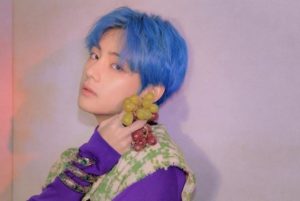
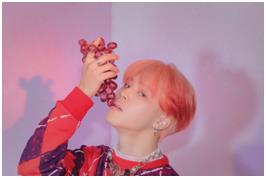

Really beautiful and interesting. Congratulations!
Francesca
Very good Gio, interesting and pleasant topic.
Keep it up!
Danila
Very interesting
And I believe this must have been difficult to write but you summarized well and done a good research
Well done
Gabriella
Good job Gio, very interesting article and very well made.
The topics are well explained, congratulations!
Alessia